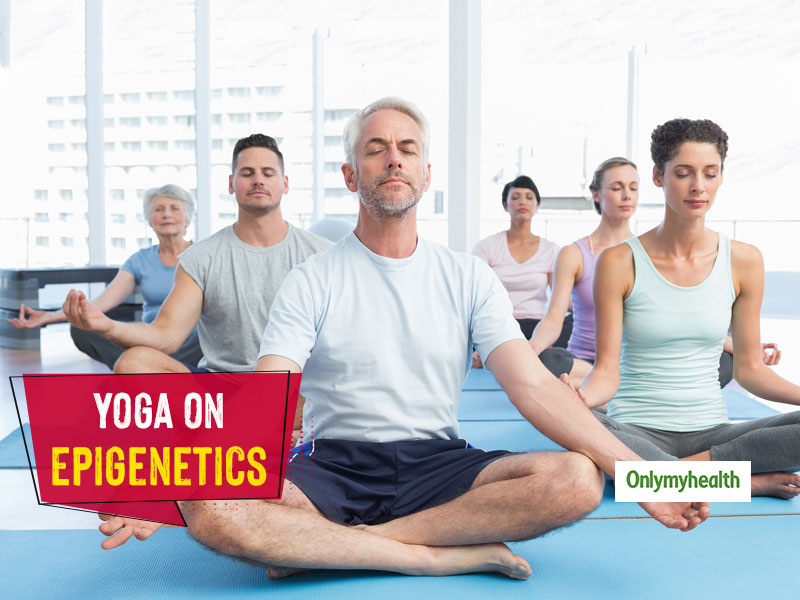
Do you feel stressed too often? Don’t worry, and you’re not alone. The growing number of mental health cases in India are pointing in the direction of a pressing need for attention. Research has found the top few sources of increasing stress in the lives of over 1 billion Indians to be money, work, family responsibilities, and health concerns. If you have been trying to take measures to reduce therapy and have not achieved the desired outcome, there is still hope.
Table of Content:-
Epigenetic research has found that the ancient art of meditation, particularly mindfulness meditation, has numerous health and stress-reducing benefits. Yoga is the most ancient form of essential human wellness or unity of mind-body or in biological terms-state of homeostasis - Homeo(resembling) Stasis (Equilibrium). In this state, all chemicals and biochemicals in the body in absolute balance state. All hormones calibrated (no excess or little testosterone, estrogen, cortisol), no excess or little Adrenaline, Dopamine (feel good), body purged of all environmental toxins. During this state, a human in absolute balance.

So how does yoga help us get there?
Also Read: Yoga For Bad Breath: Do The Yonishunya Mudra To Save Yourself From Embarrassing Situations
- As you age, your cells wear out as they process food and toxins. Imagine a machine running non-stop for months and years. It is meant to wear out if not oiled and appropriately maintained. The worse you eat and the air you breath results in faster cell ageing - Analogy: How you use the machine decides its longevity.
- Yoga involves coordinating breathing with physical movement. When you ace the physical movement coupled with breathing what happens is a beautiful interplay of physiology-neuroscience-epigenetics-homeostasis as explained below.
- The regular breathing pattern does two things, a) enriches the body with fresh oxygen b) controls heart rate that allows uniform distribution of blood and oxygen across the body. The cells love this rhythm and start to pump out toxins. Once that is achieved, then two nerves play a critical role in mind-body alignment.

Medulla- that connects the heart to the brain tells the CNS that I am beating well and evenly.
Vagus- that connects the gut or stomach to the brain tells the CNS that I am digesting food well, i.e. releasing toxins out to the liver and kidney evenly.
Also Read: Ancient Yoga Breathing Techniques to Aid Digestion
Medulla and Vagus are the nerves to we all say- he or she has got nerves of steel. Now the brain starts to get programmed in that unified motion of all organs in sync. We call this Neuroplasticity. Neuroplasticity is our brain's ability to change itself in the presence of an intervention-in this case yoga. Your neurons fire in a pattern that defines how we think and react to stimuli. When they all fire together and well we feel- Blissful and calm

What Yoga intervention does is that rhythmic breathing allows mind-body calibration resulting in neuroplasticity that fine-tunes the brain or CNS to get more relaxed. When you do this continuously (most yoga instructors recommend three days a week), it programs the Brain/CNS to start adopting that perfect neuronal pattern for ideal firing and coordination. This has been validated in multiple peers reviewed journals that ran MRI studies on people on Yoga regimen. The more you practice, the better your brain gets. This applies in case of other activities too that involve rhythmic breathing such as running and rowing.
Now, where does epigenetics or DNA modification come in?

- In the last decade, the scientific community globally has been able to map all post-genomic modifications (methylation, acetylation) and linking the pattern of post-genomic changes in human diseases. Mind-body in an uncalibrated state has an epigenetic signature (DNA modification pattern) that reflects inflammation. As the mind-body and all functions start to enter the land of homeostasis, your epigenetic name also begins to change to reflect the state of homeostasis.
- The pattern of DNA marks changes that have a downstream effect of calibrating all biochemical and chemical reactions in the body and the neuronal firing in the brain. Weak health=bad epigenetic signature, Homeostasis = Best possible epigenetic signature
- Now imagine, if you could track your epigenetic name as you go through an intervention to achieve homeostasis — insight leading to empowerment, putting you in the driver seat.
(With inputs from Dr Aman Iqbal, Founder of Vantage Enterprise, a movement for automating healthcare industry using data.)
Read more articles on Yoga
How we keep this article up to date:
We work with experts and keep a close eye on the latest in health and wellness. Whenever there is a new research or helpful information, we update our articles with accurate and useful advice.
Current Version